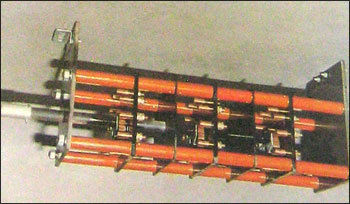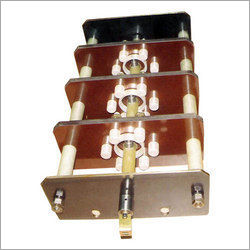Being a well reputed organization in this domain, we are providing top quality Off Circuit Tap Switch. The offered tap switch is manufactured by our adept professionals with the utilization of premium quality raw materials and modern techniques. This tap switch is extensively used for regulating output voltage to the required level of load. Apart from this, our prestigious clients can avail this Off Circuit Tap Switch at the most reasonable price. Features: Hassle free functioning Easy to fit No maintenance High protection of transformer Specifications : 11 / 22 / 33 KV 30 / 60 / 100 / 150 / 250 Amps 5 / 7 / 9 / 11 Positions Bridge Type Suitable for Horizontal Mounting With Universal Coupling Type Handle Features : Extremely sturdy model Suitable for Distribution Transformer MORE ABOUT OFF CIRCUIT TAP SWITCH Also called No-Load Tap Changer (NLTC), off-circuit tap changer, or De-Energized Tap Changer (DETC). In low power, low voltage transformers, the tap point can take the form of a connection terminal, requiring a power lead to be disconnected by hand and connected to the new terminal. Alternatively, the process may be assisted by means of a rotary or slider switch. Since the different tap points are at different voltages, the two connections can not be made simultaneously, as this would short-circuit a number of turns in the winding and produce excessive circulating current. Consequently, the power to the device must be interrupted during the switchover event. Off-circuit or de-energized tap changing (DETC) is sometimes employed in high voltage transformer designs, although for regular use, it is only applicable to installations in which the loss of supply can be tolerated. In power distribution networks, transformers commonly include an off-circuit tap changer on the primary winding to accommodate system variations within a narrow band around the nominal rating. The tap changer will often be set just once, at the time of installation, although it may be changed later during a scheduled outage to accommodate a long-term change in the system voltage profile.








































